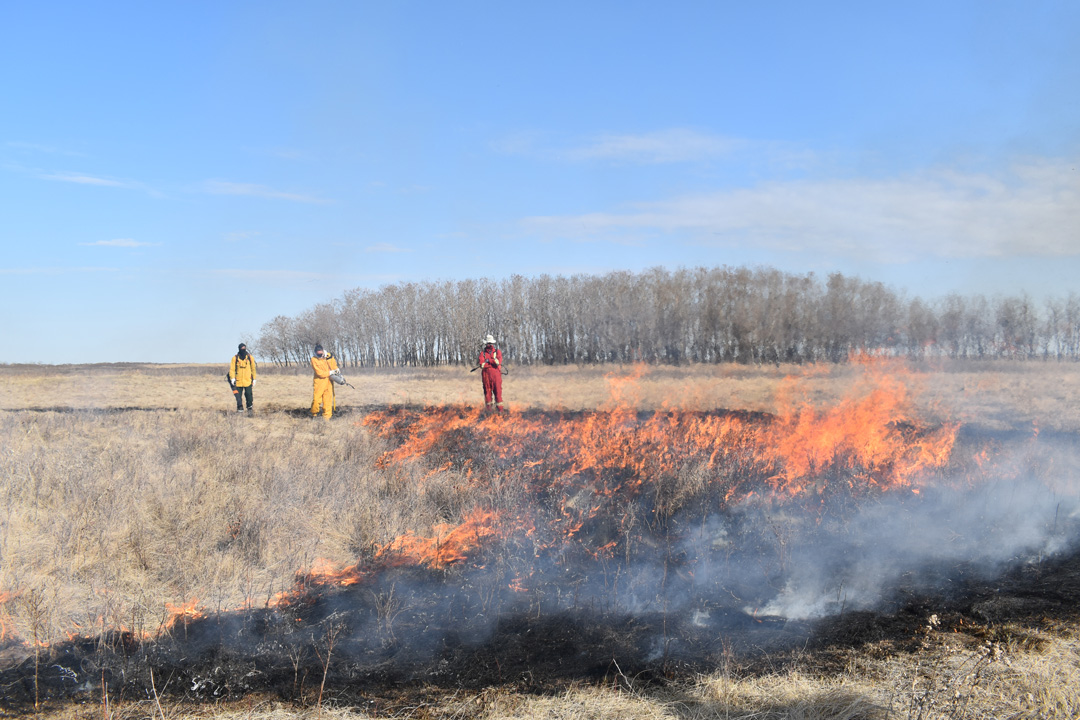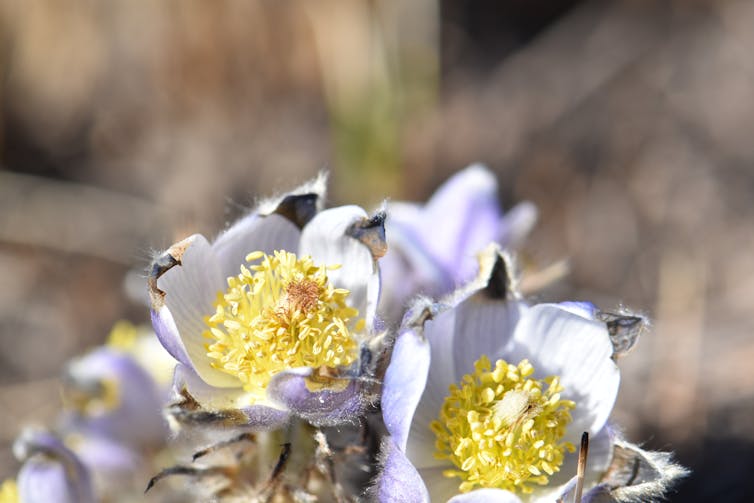
The ‘good fire’: Prescribed burning can prevent catastrophic wildfires in the future
Fire, in its proper place, is a renewing force — one that can reduce the probability of catastrophic fire.
By Eric LambRoaring flames, burned-out houses and cars, hazy air and orange skies are all around us. Already this year, millions of hectares have been torched by more than 2,200 wildfires in Canada.
In the midst of another unprecedented fire season, it is easy to see fire as a destructive force to be controlled at all costs.
Through more than 100 years of aggressive fire suppression, we have been conditioned to fear and demonize fire. From an ecological point of view, however, fire is a normal and often beneficial process.
Today, small but active groups of ecologists and land managers on the Canadian Prairies are using fire to renew and rejuvenate grassland ecosystems, enhance biological diversity and even to prevent catastrophic wildfire.
Good fires
The blackened ground following a grass fire may look devastating, but looks can be deceiving. In a healthy grassland, much of the plant tissue is below ground, well-protected from the heat of the fire.

Plants quickly resprout from these underground stems, taking advantage of the newly opened space and nutrients from the ash. For some plant species, chemical signals in the smoke and ash can even be a trigger to germinate.
Grazers such as cattle and bison will seek out burned areas to take advantage of the high-quality forage that grows back. Plant diversity is often higher post-fire, and burned areas offer important habitat for many wildlife species.
Finally, fire removes litter, dead plant material from past seasons. Most grass fires spread through dry litter; removing this accumulated fuel can form a firebreak, protecting the land against future catastrophic wildfire.
Fire suppression is not always good
Indigenous Peoples, ecologists and conservationists have long recognized the importance of fire within grassland ecosystems, but decades of active suppression have left most of Canada in a fire deficit.
The reasons for fire suppression are complex and include concerns for public safety, protection of infrastructure and a view that it is a “waste” to burn grass that could otherwise be fed to cattle.
We must recognize that the history of fire suppression stems from real concerns. The consequences of uncontrolled wildfire can be devastating, and ranchers who depend on rangelands — grasslands, shrublands, woodlands, wetlands and deserts that are grazed by domestic livestock or wild animals — to feed their livestock generally face a decline in productivity for one to three years post-fire.
But at the same time, we need to replace the fear of fire with respect for fire and the respectful use of fire as a tool.
Renewing ecosystems with fire
Indigenous Peoples have long used cultural burning for a wide variety of purposes, including controlling their landscape and improving the abundance of preferred plant species. From a western science perspective, we call this “prescribed fire,” or the carefully planned use of fire under controlled and safe conditions to achieve a particular ecosystem management goal.
The goals of prescribed fire can range from the simple ones like reducing wildfire risk through fuel reduction to complex goals that include the removal of an invasive species. In all cases the goal is a healthier ecosystem.
Prescribed fire is extensively used in the United States, particularly in tallgrass prairie. In Canada, outside of large government organizations such as Parks Canada, prescribed fire is more rarely used.
Training and collaboration guide prescribed fires
The barriers to more extensive use of prescribed fire in Canada include the lack of trained personnel and equipment, insurance and liability concerns and inter-organizational challenges such as differing training standards.
In 2018 and 2019, multiple organizations, including the Meewasin Valley Authority and University of Saskatchewan, came together to assist the Nature Conservancy of Canada to conduct four small prescribed fires at their Old Man on His Back Prairie and Heritage Conservation Area in Saskatchewan.
The fires were a part of a research project led by my University of Saskatchewan research group examining how plants, bison and cattle would respond to small burned patches in mixed-grass prairie.
Despite the challenging logistics, we found that formalizing how our organizations worked together would help make collaborative fires easier, allowing new groups with less experience to begin using fire. The success of this project led to establishment of the Canadian Prairies Prescribed Fire Exchange (CPPFE).
The CPPFE is an organization based on the American “training exchange” model where small organizations collaborate to improve training and practice. It aims to be a hub for grassland-prescribed fire knowledge in Western Canada.
The future of fire
It can be hard to maintain the perspective of “good fire” when our news is filled with images of devastation.
In the aftermath of a bad wildfire season, prescribed fire practitioners often get pushback when proposing fires. This comes externally from the public and internally from risk-adverse management.
Building a culture where fire is respected rather than feared is essential to maintain resilient landscapes. We must remember that fire, in its proper place, is a renewing force — one that can reduce the probability of catastrophic fire.![]()
Eric Lamb, Professor, Department of Plant Science, University of Saskatchewan
This article is republished from The Conversation under a Creative Commons license. Read the original article.

